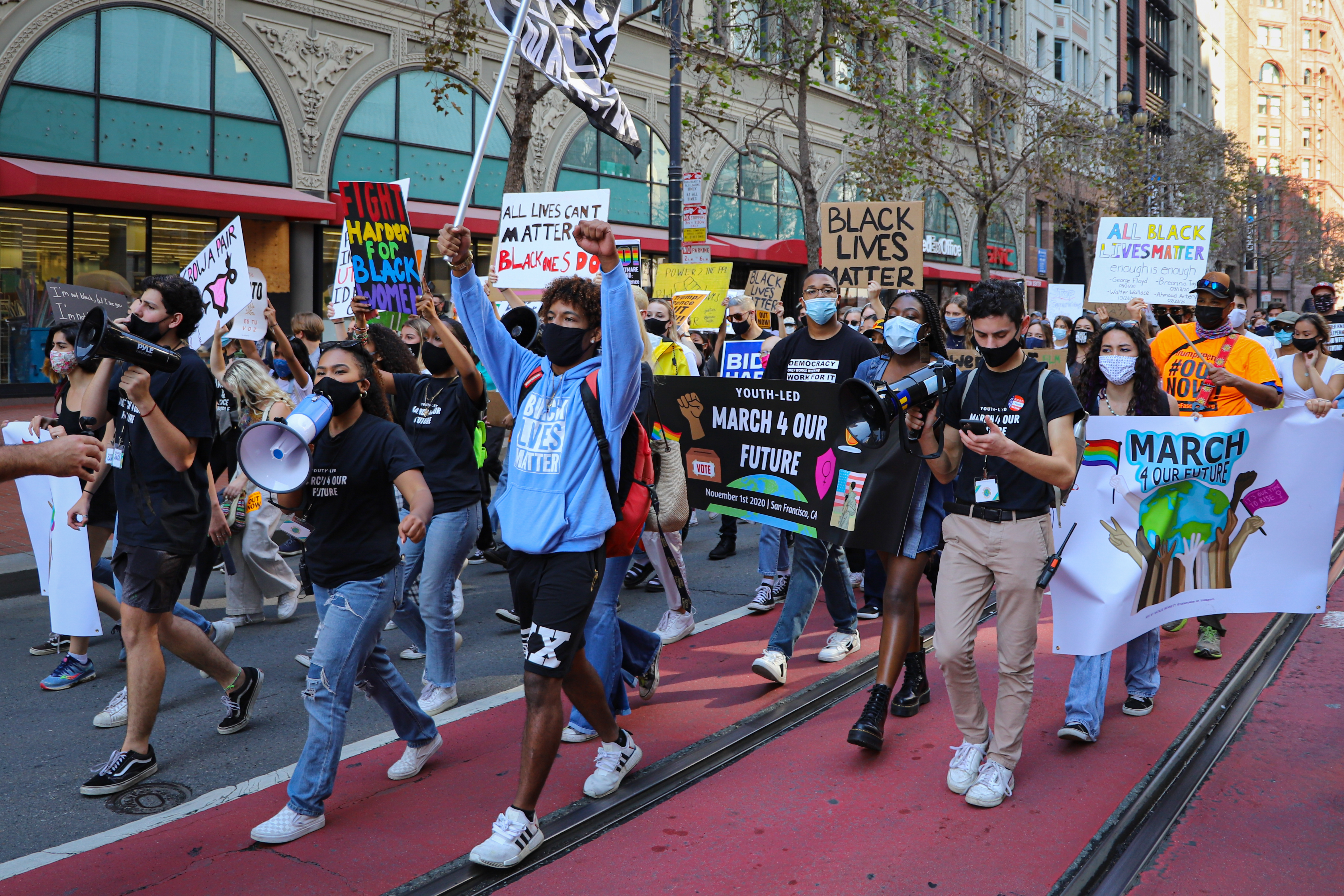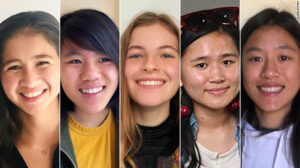
Photo by Gabe Castro-Root
Due to the impact of COVID-19, Lick-Wilmerding students and faculty have shifted their approach to activism and engagement. The pandemic, along with a presidential election year and recent protests supporting Black Lives Matter, has exposed and dramatized rampant inequities and disparities in the United States at large and in every community in particular.
On October 29, LWHS’ FANG Club (Fostering Activists in the Next Generation) collaborated with the organization 5 Elements to hold its first virtual teach-in about community health and what it means to “abolish,” with a focus on addressing and deconstructing white supremacy and the prison-industrial complex.
Naima Blanco-Norberg ’21, a leader of FANG, thought outreach was one of the biggest difficulties that COVID-19 presented. “People in the Lick community may not read the eTiger or remember community announcements, and there are definitely disparities among who has access to learning about what’s going on online,” said Blanco-Norberg. To address this issue, FANG has been reaching out to students individually to ensure that they know about scheduled events and are more eager to attend. This strategy has worked out well — over 50 Lick-Wilmerding community members attended the first teach-in.
Alongside FANG, many other student-led clubs at Lick are focusing on activism. One of LWHS’ Art Club leaders, Rebekka Kivimae ’21, said, “because of all the things going on around the world, we knew we wanted to make an impact with our club.” For their first project of the year, Art Club members created sticker designs that were used to advocate for Prop 14, which ultimately passed and allows the use of state bonds for medical research. During every meeting, the club leaders present an art activist and the issues they stand for.
Though attracting community members to all club meetings has required extra effort, “with the pandemic, there’s been a lot more attention around social issues that have been present for a long time,” said Blanco-Norberg. “There’s been so much more free time to unpack those issues.”
The pandemic has disproportionately affected Black and brown communities, and these types of inequities are also visible within the LWHS community. “I have talked to some families who are very much not at all worried about COVID-19. They have multiple homes and are able to very quickly access shelter and get their needs met,” said Director of Student Inclusion Naomi Fierro. “And then there are folks who face barriers to getting their needs met.”
Virtual teach-ins like the ones led by FANG are a unique opportunity to bring in activists from around the city, country and world to educate the LWHS community on important issues and their relevance. In a time when most people are stuck at home, Blanco-Norberg hopes that the teach-ins will help prepare students for activism when the time is right. “You have to first be educated before being an active member of a movement,” she said.
In addition to education, Fierro believes that community members must prioritize self-care before involving themselves in activism. Sarah Reichert, a behavioral health expert, wrote in a Mayo Clinic Health System article that the pandemic has commonly caused stress, anxiety and sadness. Students cannot support others until they’ve taken care of themselves and their own needs.
Once Lick community members are educated and have prioritized self-care, they can then start activism and community engagement.
LWHS students have been virtually tutoring, “particularly the children of single parents and all parents who are essential workers who don’t have the option of staying home and the bandwidth or the time to take care of their student’s academic needs,” said Fierro. Other LWHS student volunteers have participated in community meal deliveries for homebound adults. These programs are sponsored by a variety of community organizations, from Meals on Wheels to Reading Partners.
The Center for Civic Engagement has been working through its blog, social media platforms and messages in the eTiger to amplify activism and community engagement opportunities. “The Center played a critical role in turning out students to help phonebank, write postcards and get involved politically,” said Fierro. “We’ve tried to pay special attention to local communities, specific places in the Bay Area and also very specifically brown and Black communities.”
Beyond changing the ways that students are involved in activism and community engagement, it is Fierro’s hope that COVID-19 “will open the eyes of people who have thus far in their lives been shielded or protected from seeing some of the real ramifications of poverty.”






